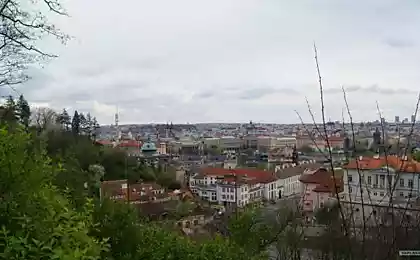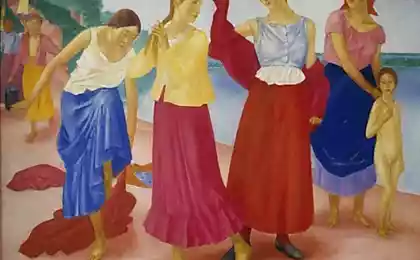1480
Unearthly beauty of Russian city
Take a look at the photos of Prokudin-Gorsky, which show pre-revolutionary Russian city in all its beauty and grooming.
Now this is nothing left.
View of Zlatoust from the West, 1909 .:

What was the secret of this unearthly beauty and harmony? The merger with picturesque landscape, and not podmyatom zaslonёnnym bulks of multi-storey buildings. The perfect composition in which scattered over the hills, "undersized" buildings invariably got married slender silhouettes of temples and soaring bell towers. The sturdy wooden huts in which lived 99% of the then Russian urban population (with the exception of the capital). The accuracy of greenery, which rarely rises above the roofs.
Looking at these pictures to understand why the author himself called his work "painting". Here are just some of the images prokudinskih svetopisnyh Russian city.
Map of Rostov the Great in 1911 .:

Rostov Kremlin - the pride of Russia and the efforts of generations of restorers it manages to maintain a dignified way. However, almost all the rest of the city around the Kremlin is now producing a very sad impression in comparison with prokudinskimi images.
Boris and Gleb Monastery in Torzhok, 1910 .:

Torzhok and today remains one of the most beautiful cities in Russia and it seems that the form shown in the picture has changed little. However, on closer acquaintance it turns out that everything is dilapidated, overgrown and has come into disrepair.
View Staritsy on the Volga in 1910 .:
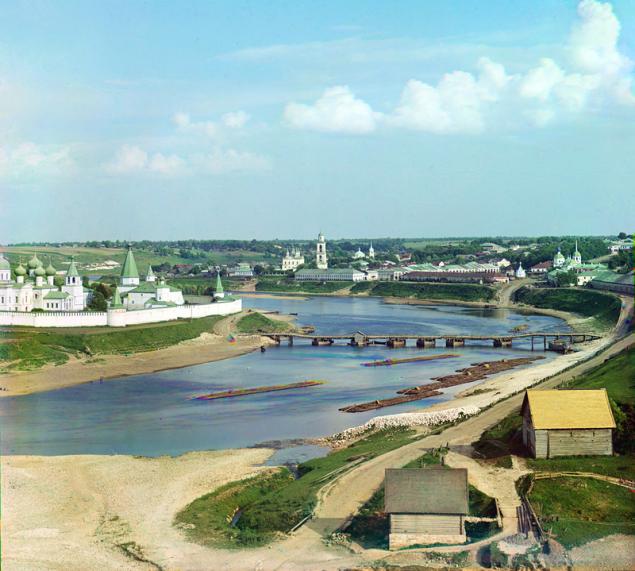
This town is very beautiful and today, in spite of everything. He revived Uspensky Monastery. But a huge part of her former beauty still lost, many churches demolished, others are in ruins and desolation. The remains of a beautiful ensemble of the city side are barely visible behind dense thickets. And a huge concrete bridge over the Volga was not conducive to the preservation of historic appearance.
Panorama Zubtsova in 1910 .:

The picturesque town at the confluence of the Volga with Vazuza lost almost all their temples and heavily overgrown. But the view from the mountain and now Polustovoy fine, despite the looming panel high-rise buildings in the distance.
View Rzhev in 1910 .:

Subjected to total destruction during the war Rzhev retained only the former landscape, which now remains its chief ornament.
City Ostashkov in 1910 .:
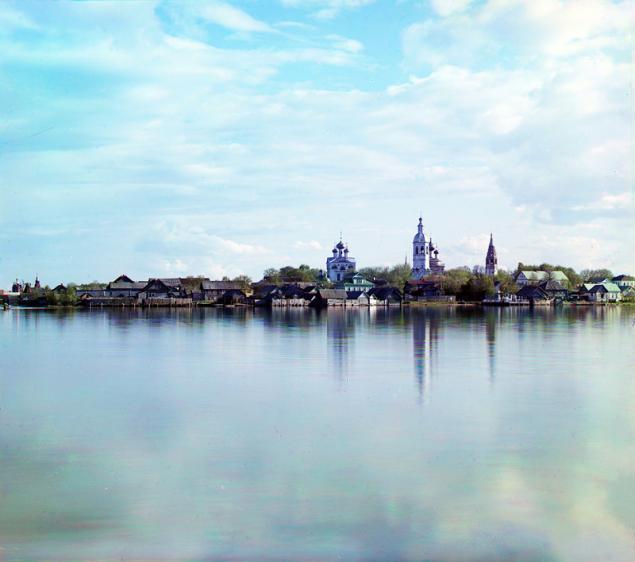
The capital city of Ostashkov Seliger region has managed to preserve the historical appearance of the old part, but it is in a strong desolation.
Alexandrov. General view of the Assumption Convent in 1911 .:

The former residence of Ivan the Terrible (Alexander Sloboda) preserved the integrity of both the museum complex, but the city is now built up with high-rise buildings, and does not look particularly picturesque.
Suzdal in 1912 .:

City-reserve Suzdal today remains the standard of beauty Russian city, so go there by tourists from all over the world. Suzdal shows just how beautiful and attractive for tourism and recreation could be our historical city, if managed to retain its former beauty and grooming.
Novaya Ladoga in 1909 .:

Trying to make a comparison in the same perspective gives now quite sad result - all overgrown, wild, most of the temples are in ruins. Only in recent years carried out the restoration of the ancient church of St. John the Evangelist Medvedsky monastery.
City of Kirillov from the Kazan Cathedral in 1909 .:
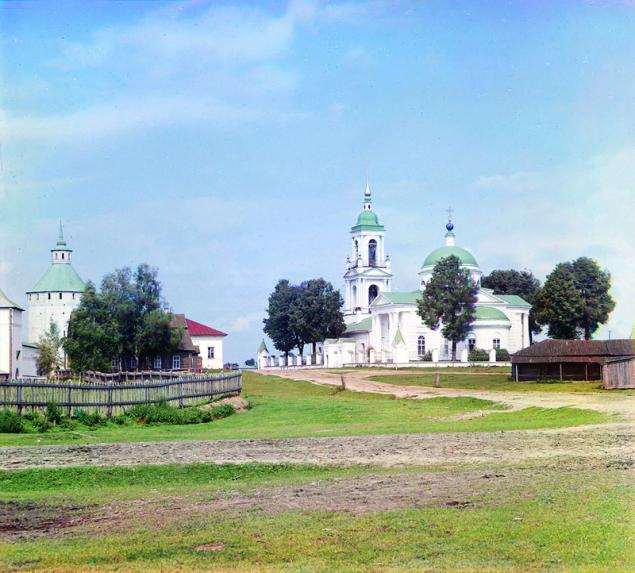
Overall Kirillov pretty well preserved with its majestic Cyril Belozersky monastery is considered the pearl of the Russian North. On the walls of the restored monastery constantly challenges are the same: everything was overgrown and dilapidated, Kazan Cathedral is decapitated.
Belozersk with the city wall in 1909 .:

Ancient and beautiful Belozersk could become a tourist mecca, if not come to a complete desolation. It seems that over the past 20 years there has not recovered any of the temple.
View Vytegra from the mountain in 1909 .:

Erstwhile capital of the Mariinsky waterway Vytegra now retains its ancient flavor, although the former panorama drowned in the sprawling greens. Resurrection Cathedral beheaded and almost unrecognizable in its current guise.
View of the Cathedral mountain in Ples, September 1910 .:

A picturesque town on the Volga, inspired Levitan, miraculously preserved its beauty. But now there comes the alarming news.
Tobolsk in 1912 .:
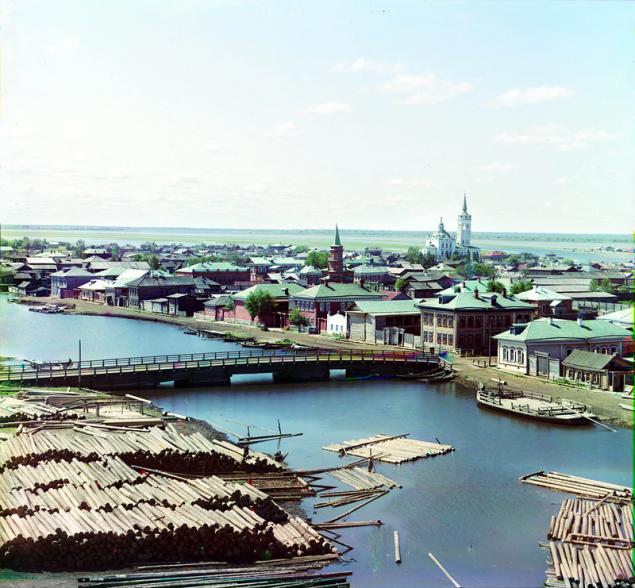
Perhaps the most interesting of the historical cities of Siberia managed to keep most of its monuments, including the beautiful temples in the style of "Siberian baroque". The surviving temples are now reduced, but the background wooden buildings, which greatly deteriorated in the last few years have started to replace the apartment buildings of 3-4 floors directly below the walls of the Kremlin.
No less picturesque and big cities were.
That was in 1911, Vladimir .:

Center Vladimir and now extremely picturesque and beautiful, but this particular kind of spoiled a huge concrete bridge built in 1958. Unfortunately, every year more and more degraded the old wooden buildings.
Smolensk from Kazan Mountain in 1912 .:

Smolensk unusually beautiful for its steep hills, the chief of which is crowned by the majestic Cathedral of the Assumption. Although badly damaged in the war image of a city historically was unmoved and still admired. However, the time has not passed in vain. Old wooden building almost completely lost, and the tall trees hid many wonderful views.
The ensemble of the church of St. John Chrysostom in Korovnitskoy settlement in Yaroslavl in 1911 .:

Despite the loss of the historical center of Yaroslavl it remains one of the most beautiful in the whole of Russia, and quite prettier for the 1000 anniversary. However, the historical part of the city across the river Kotorosl is much more sad fate: everything is overgrown, wild, old buildings have deteriorated and largely lost, famous temples are in poor condition.
The left bank of the Volga Tver with Catherine's Church in 1910 .:

Center of Tver in general retained its historical appearance, although it lost a few important landmarks, beginning with the Cathedral of the Transfiguration.
View from the embankment Yekaterinburg city pond in 1909 .:

Something of this building still survived, but by the same harmony remained, alas, disappeared. Now Ekaterinburg - a city of skyscrapers, fully and completely changed its image.
Tura River in Tyumen in 1912 .:

City persistent in the heart of traditional wooden buildings, for which he even won playful nickname "Tyumen - capital of the villages." In recent years, the picturesque high bank dressed in stone, arrange for it promenade. Low Beach heavily overgrown.
Panorama of Petrozavodsk in 1916 .:
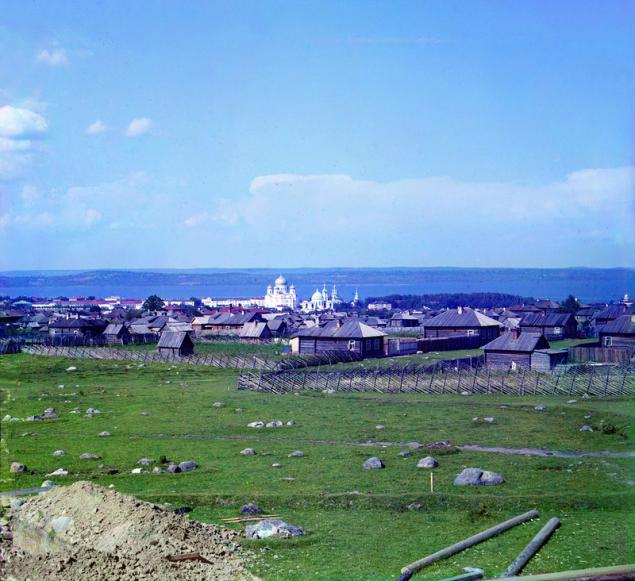
Now it's a completely different city, which is common with a former beauty of Lake Onega. From the snow-white ensemble of temples was nothing left.
Use modern restoration of pictures and panoramas restorer Duffy's Tavern.
Source: prophotos-ru.livejournal.com
Now this is nothing left.
View of Zlatoust from the West, 1909 .:

What was the secret of this unearthly beauty and harmony? The merger with picturesque landscape, and not podmyatom zaslonёnnym bulks of multi-storey buildings. The perfect composition in which scattered over the hills, "undersized" buildings invariably got married slender silhouettes of temples and soaring bell towers. The sturdy wooden huts in which lived 99% of the then Russian urban population (with the exception of the capital). The accuracy of greenery, which rarely rises above the roofs.
Looking at these pictures to understand why the author himself called his work "painting". Here are just some of the images prokudinskih svetopisnyh Russian city.
Map of Rostov the Great in 1911 .:

Rostov Kremlin - the pride of Russia and the efforts of generations of restorers it manages to maintain a dignified way. However, almost all the rest of the city around the Kremlin is now producing a very sad impression in comparison with prokudinskimi images.
Boris and Gleb Monastery in Torzhok, 1910 .:

Torzhok and today remains one of the most beautiful cities in Russia and it seems that the form shown in the picture has changed little. However, on closer acquaintance it turns out that everything is dilapidated, overgrown and has come into disrepair.
View Staritsy on the Volga in 1910 .:

This town is very beautiful and today, in spite of everything. He revived Uspensky Monastery. But a huge part of her former beauty still lost, many churches demolished, others are in ruins and desolation. The remains of a beautiful ensemble of the city side are barely visible behind dense thickets. And a huge concrete bridge over the Volga was not conducive to the preservation of historic appearance.
Panorama Zubtsova in 1910 .:

The picturesque town at the confluence of the Volga with Vazuza lost almost all their temples and heavily overgrown. But the view from the mountain and now Polustovoy fine, despite the looming panel high-rise buildings in the distance.
View Rzhev in 1910 .:

Subjected to total destruction during the war Rzhev retained only the former landscape, which now remains its chief ornament.
City Ostashkov in 1910 .:

The capital city of Ostashkov Seliger region has managed to preserve the historical appearance of the old part, but it is in a strong desolation.
Alexandrov. General view of the Assumption Convent in 1911 .:

The former residence of Ivan the Terrible (Alexander Sloboda) preserved the integrity of both the museum complex, but the city is now built up with high-rise buildings, and does not look particularly picturesque.
Suzdal in 1912 .:

City-reserve Suzdal today remains the standard of beauty Russian city, so go there by tourists from all over the world. Suzdal shows just how beautiful and attractive for tourism and recreation could be our historical city, if managed to retain its former beauty and grooming.
Novaya Ladoga in 1909 .:

Trying to make a comparison in the same perspective gives now quite sad result - all overgrown, wild, most of the temples are in ruins. Only in recent years carried out the restoration of the ancient church of St. John the Evangelist Medvedsky monastery.
City of Kirillov from the Kazan Cathedral in 1909 .:

Overall Kirillov pretty well preserved with its majestic Cyril Belozersky monastery is considered the pearl of the Russian North. On the walls of the restored monastery constantly challenges are the same: everything was overgrown and dilapidated, Kazan Cathedral is decapitated.
Belozersk with the city wall in 1909 .:

Ancient and beautiful Belozersk could become a tourist mecca, if not come to a complete desolation. It seems that over the past 20 years there has not recovered any of the temple.
View Vytegra from the mountain in 1909 .:

Erstwhile capital of the Mariinsky waterway Vytegra now retains its ancient flavor, although the former panorama drowned in the sprawling greens. Resurrection Cathedral beheaded and almost unrecognizable in its current guise.
View of the Cathedral mountain in Ples, September 1910 .:

A picturesque town on the Volga, inspired Levitan, miraculously preserved its beauty. But now there comes the alarming news.
Tobolsk in 1912 .:

Perhaps the most interesting of the historical cities of Siberia managed to keep most of its monuments, including the beautiful temples in the style of "Siberian baroque". The surviving temples are now reduced, but the background wooden buildings, which greatly deteriorated in the last few years have started to replace the apartment buildings of 3-4 floors directly below the walls of the Kremlin.
No less picturesque and big cities were.
That was in 1911, Vladimir .:

Center Vladimir and now extremely picturesque and beautiful, but this particular kind of spoiled a huge concrete bridge built in 1958. Unfortunately, every year more and more degraded the old wooden buildings.
Smolensk from Kazan Mountain in 1912 .:

Smolensk unusually beautiful for its steep hills, the chief of which is crowned by the majestic Cathedral of the Assumption. Although badly damaged in the war image of a city historically was unmoved and still admired. However, the time has not passed in vain. Old wooden building almost completely lost, and the tall trees hid many wonderful views.
The ensemble of the church of St. John Chrysostom in Korovnitskoy settlement in Yaroslavl in 1911 .:

Despite the loss of the historical center of Yaroslavl it remains one of the most beautiful in the whole of Russia, and quite prettier for the 1000 anniversary. However, the historical part of the city across the river Kotorosl is much more sad fate: everything is overgrown, wild, old buildings have deteriorated and largely lost, famous temples are in poor condition.
The left bank of the Volga Tver with Catherine's Church in 1910 .:

Center of Tver in general retained its historical appearance, although it lost a few important landmarks, beginning with the Cathedral of the Transfiguration.
View from the embankment Yekaterinburg city pond in 1909 .:

Something of this building still survived, but by the same harmony remained, alas, disappeared. Now Ekaterinburg - a city of skyscrapers, fully and completely changed its image.
Tura River in Tyumen in 1912 .:

City persistent in the heart of traditional wooden buildings, for which he even won playful nickname "Tyumen - capital of the villages." In recent years, the picturesque high bank dressed in stone, arrange for it promenade. Low Beach heavily overgrown.
Panorama of Petrozavodsk in 1916 .:

Now it's a completely different city, which is common with a former beauty of Lake Onega. From the snow-white ensemble of temples was nothing left.
Use modern restoration of pictures and panoramas restorer Duffy's Tavern.
Source: prophotos-ru.livejournal.com















